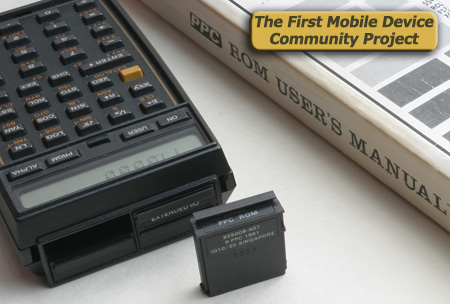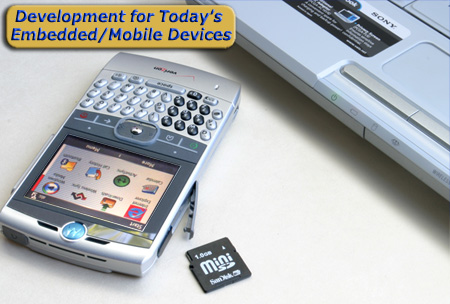An Introduction to the HHP-16K EPROM Emulator
Sunday, September 9th, 2007Ron Fredericks writes: The HHP-16K EPROM Emulator allows application code to be read by Hewlett-Packard’s (HP’s) HP-41 calculator. Instead of inserting a small pre-built module into one of the four module bays of the calculator, such as the PPC ROM module discussed in one of my previous blog posts, this unit allows a person to use custom built programs previously stored into EPROMs (Erasable Programmable Read Only Memory devices) using software development tools and an EPROM burner.
Figure 1: HPP-16K Emulator Connected to HP-41 Calculator

Photo by Ron Fredericks using Canon EOS-10D 34mm fluorite lens, UV Filter, 1.5s & f/22 @ ISO 100, on tripod, from Embedded Components’ HP lab collection.
Business Development using EPROM
The HHP-16K represents, a stepping-stone from source code to mass marketing through the use of HP’s commercial software development tools and it’s professional services team. Advertisement and promotion of HP’s professional services to productize HP ROM modules from EPROMs could be found within HP’s own software development tools, and in newsletters – newsletters published by HP and by independent self-assembling developer communities such as national and international versions of the HP Computing Club or HPCC.org. HP’s fee for this service was not trivial, often HP computer clubs would collect donations from 100’s or 1000’s of their members to raise the $20,000 to $60,000 (in 1980’s dollars) to produce these ROM modules for their members – all before the Internet.
This emulator is an example of an important design pattern for modern day software developers forming into ecosystems around mass marketed smart consumer devices!
A typical consumer device in today’s market often has gigabytes of flash memory or other extensions via cellular networks, enterprise networks, or WI-FI Internet access, that behave just like this old 16 kilobyte emulator. With this design pattern – developers can improve the consumer’s experience on popular devices by adding new software applications, middleware, content, and development tools. While at the same time, developers gain significant new business development opportunities for themselves, content providers, software tools vendors, professional services teams, and device manufacturers alike.

